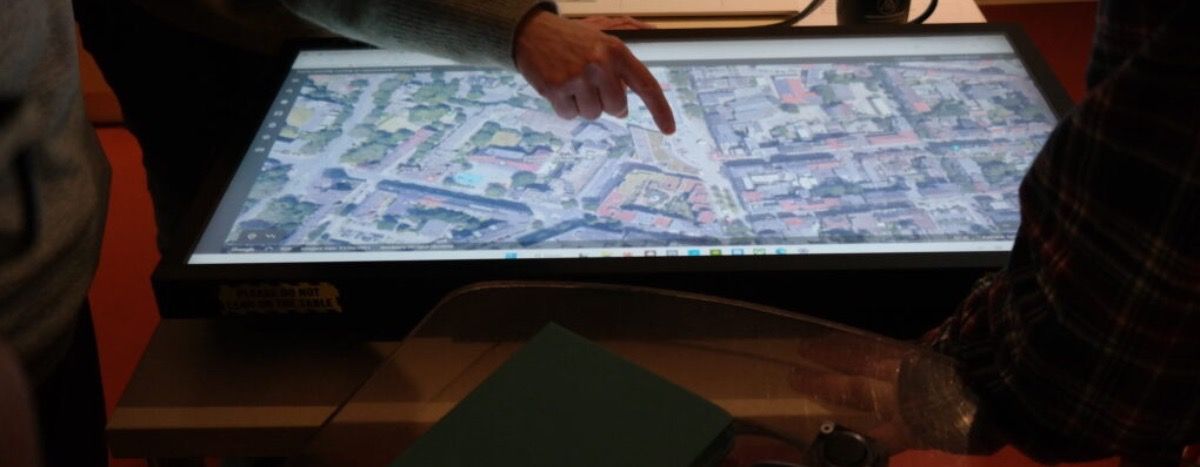
Empowering Inclusive Communities: Citizen Science Unites for Vulnerable Populations in Europe
Published on
A story by Kaan Yildirim
In the center of Herne, Germany, a group of citizens with diverse abilities gathered around an innovative map table, their fingers tracing routes and landmarks on its interactive surface.
This scene, part of the Digital Mapping with Disabled Citizens (DiMDiCi) project activity, encapsulates the essence of citizen science in action. Here, individuals with so-called cognitive disabilities actively shape the design of their city, contributing to the development of a digital mapping tool that will make public spaces more accessible and inclusive.
Meanwhile, in a very different space—a retirement home in Treviso, Italy—older adults were engaging in different participatory mapping activities through a project called Ageing in a Caring Community (AGORAge). These projects exemplify the impact of blending citizen engagement with scientific research.
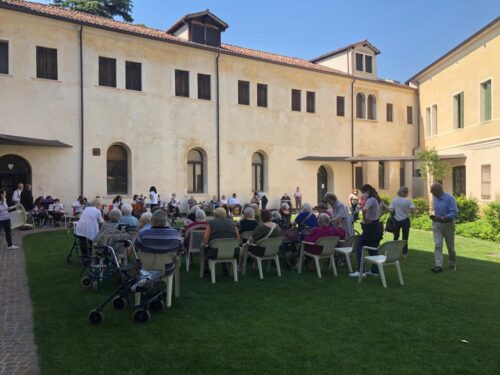
DiMDiCI and AGORAge are just two of ten European citizen science projects, each with a unique focus, that were enabled within the framework of the COESO project —a European-funded project to foster citizen science in the social sciences and humanities disciplines.
DiMDiCi aims to enhance city planning inclusivity for those with so-called cognitive disabilities, while AGORAge is dedicated to fostering community social inclusion for older adults. The unifying principle of these projects is the concept of citizen science, a research method that actively involves the public in the scientific process, from finding a research question to collecting data.
This approach focuses on empowering community members to play a pivotal role in the knowledge creation and integration process. By doing so, these initiatives aim to democratize science, fostering a collaborative environment between researchers and the community. This leads to the development of inclusive solutions that have a direct and meaningful impact on the lives of participants and their communities

In Herne, Germany, the Digital Mapping with Disabled Citizens (DiMDiCi) project, involving collaborators like Hochschule für Gesundheit, University of Twente, Diakonische Stiftung Wittekindshof, and the Municipal Administration of Herne, reflects a deep commitment to inclusivity in urban planning.
This initiative is centred on developing a digital mapping tool, called OGITO, with the direct involvement of people with so-called cognitive disabilities, showcasing a transformative approach to city design. It aims to support decision-making for reshaping urban spaces into more accessible and navigable environments for everyone, emphasizing the importance of considering the needs and perspectives of those often marginalized in everyday planning processes.
This project is a significant step towards integrating participatory design and social equity in the realm of urban development, as it involves people with disabilities in creating an inclusive digital mapping tool.
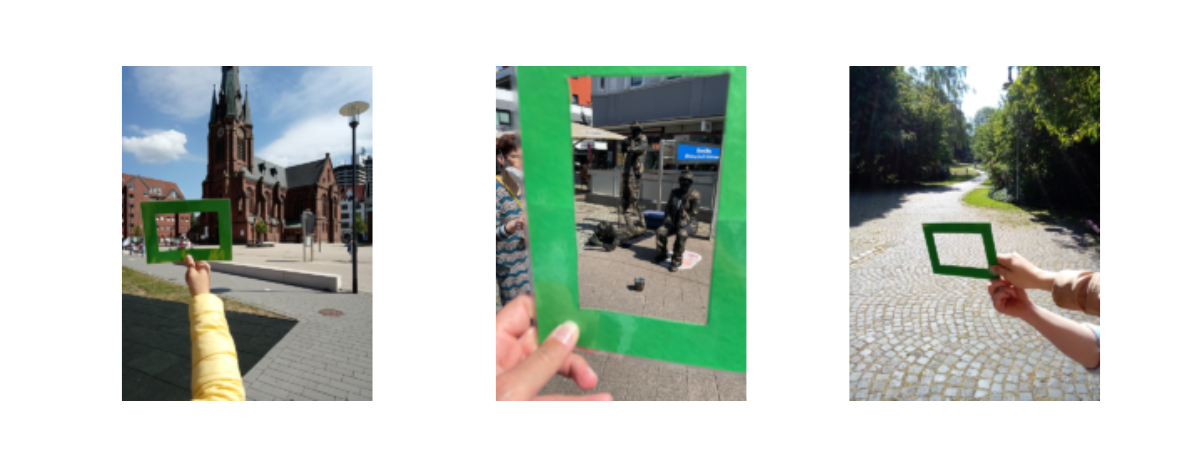
The project addresses the need for walkable neighbourhoods designed with input from citizens of diverse abilities. People with diverse abilities are central to the project, contributing as co-researchers alongside academic researchers. The expected outcome is a universally designed digital mapping tool that facilitates participatory mapping and aids in the development of accessible public spaces.

During the project, community co-researchers gained insights into their living space through spatial learning, facilitated by their in-situ observations and engagement with maps, and as a result they now pay increased attention to the configuration of urban public space.
Julia Brüggemann, a social scientist at the Department of Community Health (Hochschule für Gesundheit), plays a pivotal role in the DiMDiCi project, highlighting the essence of collaboration and inclusivity in their work. She emphasizes the importance of working on an equal footing with all participants, including those with so-called cognitive disabilities, and the valuable face-to-face interactions that were made possible by synergies with another project. The workshops, designed to be engaging and approachable, introduced participants to the map table, an interactive tool with digital mapping capabilities, through playful exercises. This approach effectively eased any apprehension towards technology and fostered intuitive use.
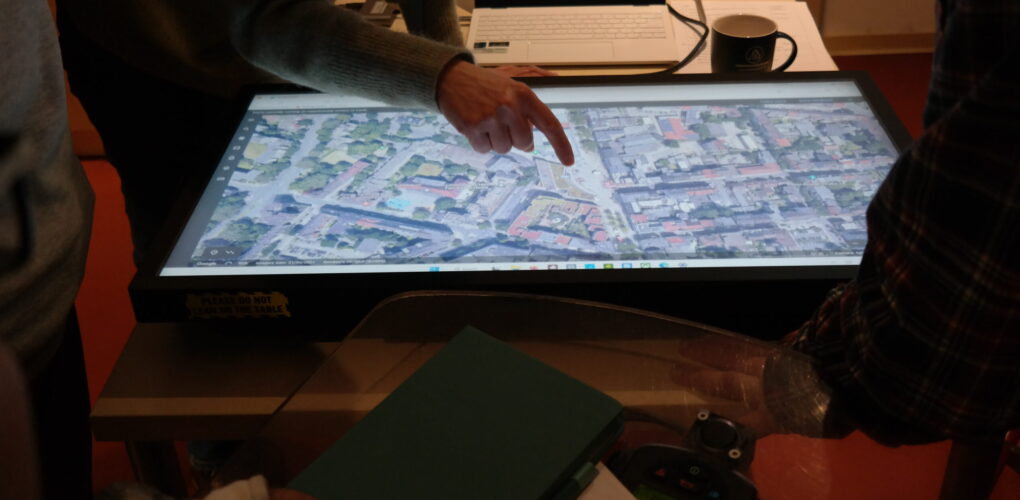
Reflecting on the project's impact, Brüggemann underscores the strong identification and connection the co-researchers with cognitive disabilities felt towards their role in the research process, leading to enhanced self-efficacy and confidence. These observations highlight the transformative power of involving diverse participants in scientific projects, not only in terms of project outcomes but also in the personal growth of the participants.
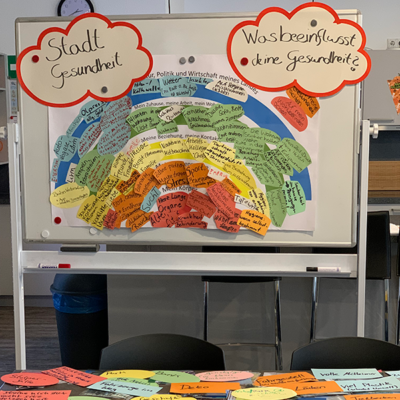
In Brüggemann's words, "We collaborated on an equal footing, meeting regularly in person," and "The co-researchers strongly identified themselves with the topic, fostering experiences of self-efficacy and increased self-confidence...", thus encapsulating the spirit of the project's methodology and its far-reaching impacts, both in terms of technological development and personal empowerment.
In Treviso, Italy, the AGORAge project, another initiative within the COESO project, is a testament to the collaborative synergy between Isabella Riccò, a researcher from the University Rovira I Virgili, and Adele De Stefani, a project manager at ISRAA, a public institution providing services to older adults. Their partnership reflects the blend of academic rigour and practical application found within citizen science methodologies.
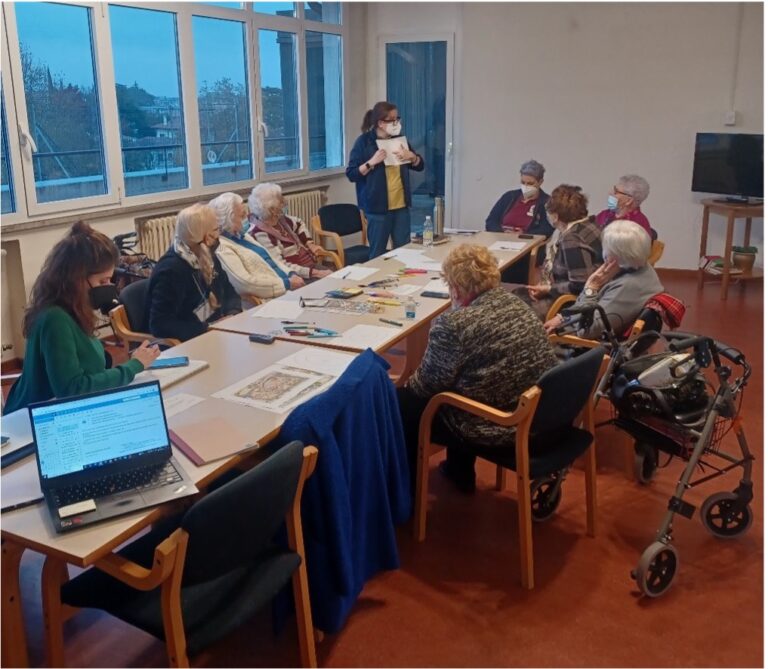
Isabella Riccò, overseeing the research aspect of AGORAge, focuses on developing methodologies and analyzing data, ensuring the project's academic integrity. Her expertise in medical anthropology and aging is instrumental in bringing a scientific perspective to the project and is crucial for its credibility and effectiveness.
Adele De Stefani, with her background in anthropology and hands-on experience in the involvement of older people in participative initiatives and projects, brings invaluable insights into the practical aspects of the project. She coordinates the collaboration with ISRAA professionals and directly engages with older adults, ensuring the research is grounded in the realities of those it aims to serve.
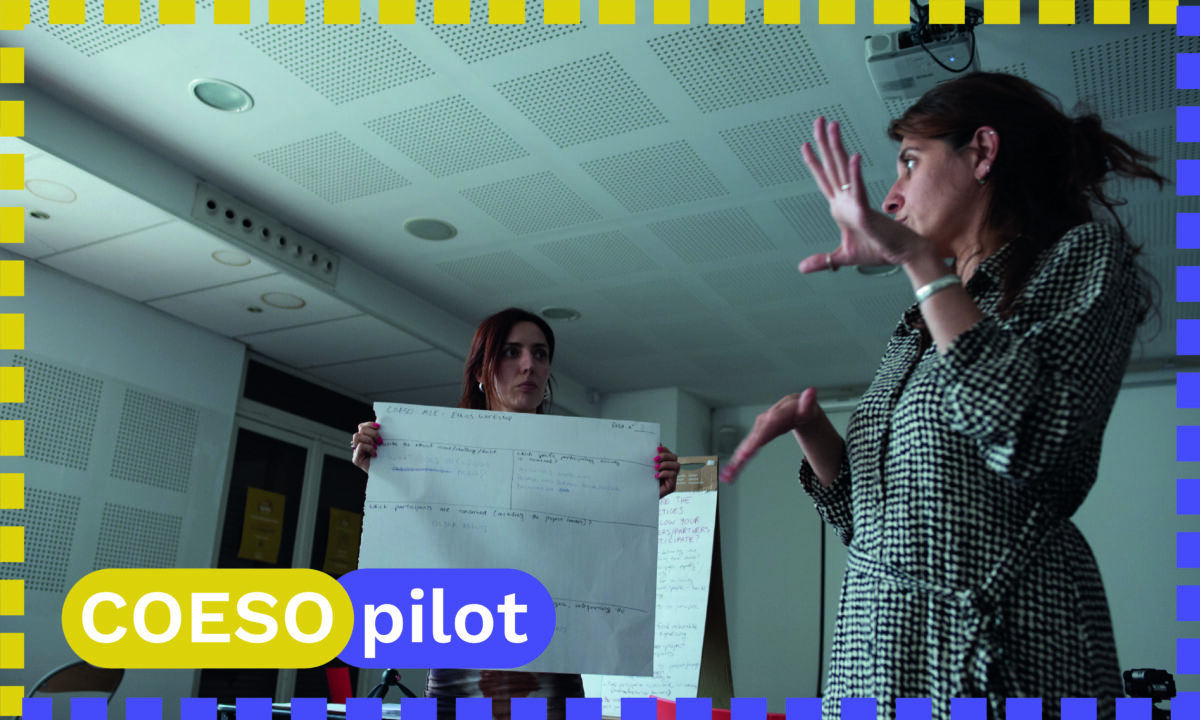
Together, they have navigated the intricacies of participatory research, exploring themes like “social safeness” and “caring community” within the context of a retirement home and senior cohousing and in relation to the neighborhood surrounding these premises. Their work highlights the significance of involving different stakeholders, including the elderly and care professionals, in the research process, fostering a bottom-up approach that resonates with the needs and desires of the whole community.
Underpinning DiMDiCi and AGORAge is the essential element of citizen science—a collaborative approach to research that actively involves individuals from diverse backgrounds and experiences in the research process. This empowerment of the public not only democratizes knowledge-building but also ensures that the solutions and insights generated reflect the real needs and perspectives of the communities being studied, fostering a more inclusive and equitable approach to problem-solving. Citizen science allows individuals to become active participants and contributors to scientific endeavors, transcending traditional top-down research methods and promoting a sense of ownership and agency among the participants.
The shared goal of these initiatives is to foster the creation of accessible, welcoming, and inclusive urban spaces for everyone, irrespective of age or cognitive ability. The AGORAge and DiMDiCi projects are at the forefront of this endeavor, seamlessly integrating the perspectives of people with specific needs into the planning process. This approach ensures that their concerns are a fundamental part of urban and community development, not merely an afterthought.
In the realm of citizen science initiatives, these projects are not just about research; they're about forging meaningful connections and overcoming challenges. Isabella Riccò recalls she and Adele De Stefani embarked on a journey of testing a digital co-creation platform called Socatel, with a sharp focus on addressing the long-term care needs of older adults.
Developed in the frame of an Horizon 2020 project, the Socatel platform had been adopted by ISRAA at a later stage through a digital twinning initiative, to co-design an online service to support older adults with cognitive impairment and their caregivers during the Covid-19 pandemic. This initial experimentation ignited their creativity and paved the way for further development of ideas and collaborations, marking the beginnings of AGORAge.
In the DiMDiCi project, Julia Brüggemann has observed a significant impact stemming from their collaborative efforts. Most notably, the active engagement and strong sense of identification that co-researchers with cognitive disabilities have with the project's goals. Their deep involvement goes beyond mere participation; it establishes them as key contributors to the research process. This level of engagement has been transformative, both for the project's outcomes and for the co-researchers themselves, affirming their vital role in shaping research that directly affects their lives
However, citizen science endeavors, like AGORAge, do come with their set of challenges. Adele De Stefani acknowledges a primary hurdle they face, particularly when working with older adults—the need to continuously engage and maintain their involvement. To address this, the project strives to carefully select activities and methodologies that are not only suitable but also motivating for residents. Challenges such as this underscore the need for “third party” involvement - organizations such as ISRAA and Diakonische Stiftung Wittekindshof, who are experts on the communities they serve and can offer practical strategies to ensure the inclusivity of their constituents to actively contribute to the project's goals.
Both project teams expect a future with more citizen science engagement practices. The AGORAge project team plans to continue to actively involve older adults living in nursing homes and senior co-housing facilities in data collection, analysis and community-building activities. Residents will have the opportunity to document their daily experiences, preferences, and challenges, and make proposals aimed at shaping a caring community, enabling them to directly contribute to the improvement of care services. Through collaborative workshops and discussions, both researchers and older adults will exchange valuable insights, leading to the development of a living environment and community in which the older person is recognized and valued, and conveying new imagery of aging and care facilities emancipated from the stereotypes and prejudices often associated with them.
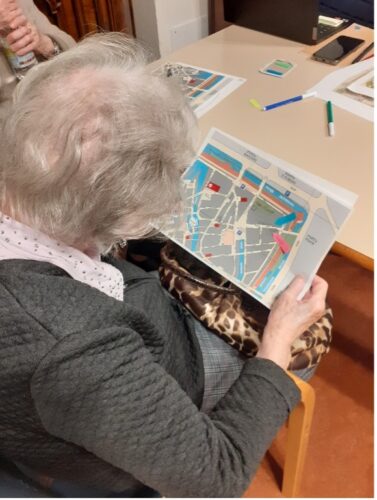
In the DiMDiCi project, individuals with so-called cognitive disabilities will continue to be engaged in the co-design and testing of digital mapping tools, allowing them to map their own communities and suggest improvements. This approach ensures that the tools are user-friendly and genuinely address their needs. Regular interactions and workshops between project researchers and participants will facilitate the exchange of knowledge, providing researchers with a deeper understanding of the challenges faced by this population, while participants acquire valuable digital skills and contribute to a more inclusive urban environment.
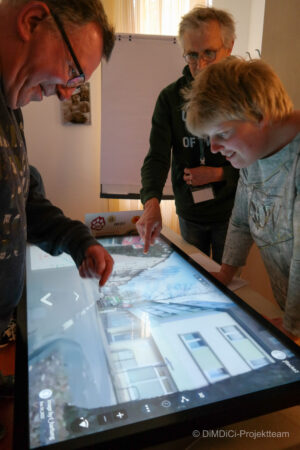
By empowering the affected community members through citizen science, both projects not only anticipate more relevant and impactful outcomes but also foster collaboration and a sense of ownership. The exchange of knowledge within the projects enriches the overall understanding of the issues at hand for everyone involved and promotes the creation of inclusive and caring communities.
Ultimately, these initiatives highlight that citizen science is more than just a research methodology. It's a transformative tool that democratizes knowledge, fosters inclusivity, and empowers citizens to play an active role in shaping their communities.
For more insights into the AGORAge project and its developments, visit their blog at AGORAge Blog and their blog on the COESO project site at COESO AGORAge.
One of the main outputs of the project is the AGORage: Caring Community Toolkit addressed to all those who are interested in implementing initiatives to promote the creation of caring communities in which the social inclusion of older people is given special consideration. The toolkit is available in English, French, Italian, Spanish, and Catalan (here you can find all the versions).
For further information on the DiMDiCi project and its initiatives, you can explore their blog at DiMDiCi Blog and their blog post on the COESO project site at COESO DiMDiCi.
—
This project was organised in collaboration with the COESO research project (Collaborative Engagement on Societal Issues), combining social sciences and participatory research. Coordinated by the École des Hautes Études en Sciences Sociales, or School of Advanced Studies in the Social Sciences, COESO is funded by the research programme Horizon 2020. The content of this article may not under any circumstances be considered as reflecting the position of the European Commission, which may not be held responsible for the information it contains.
Cover photo: Julia Brüggemann



